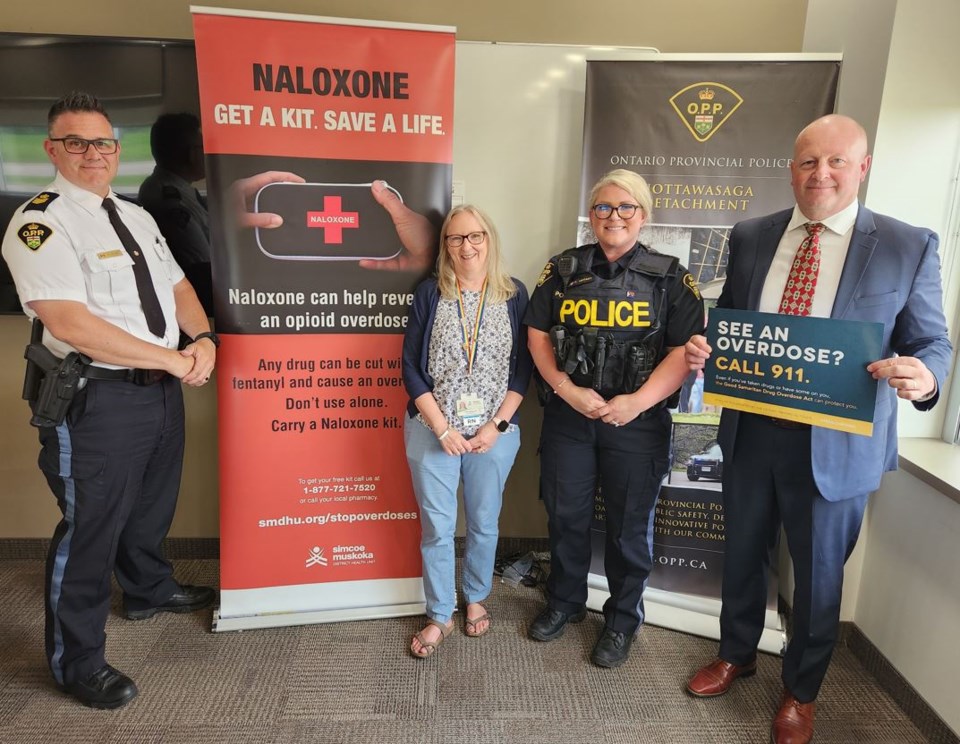NEWS RELEASE
ONTARIO PROVINCIAL POLICE
*************************
Opioid overdoses are claiming the lives of thousands of Canadians of all ages, from all backgrounds and walks of life.
The impact of the opioid crisis continues to devastate individuals, families and communities as a whole. As the Nottawasaga detachment of the Ontario Provincial Police (OPP) kicks off the opioid public awareness campaign, we would like to review opioids, the definition and signs of an overdose and risk factors associated to overdoses.
Together we are doing our very best in helping to increase community safety and well-being across not only the province, but the country.
By partnering with the Simcoe Muskoka District Health Unit for this campaign, our aim is to provide local resources to our community members, in the hopes of increasing awareness of the use, and misuse, of opioids. The campaign will primarily take place on Twitter @OPP_CR and Facebook @OPPCentralRegion. Please follow along to educate yourself and help raise awareness, increase education on this topic, and inevitably reduce stigma.
What is an opioid?
- Opioids are a family of drugs used to treat and relieve acute and chronic pain, and are commonly known as prescription painkillers. While opioids are effective at treating pain, they are also highly addictive. This may lead individuals to become dependent and require increased doses. Anyone can become addicted to opioids.
- Opioids include morphine, codeine, OxyContin, Percocet, hydrocodone (Vicodin), hydromorphone (Dilaudid), meperidine (Demerol), methadone, fentanyl and heroin.
- Some people abuse opioids to get high. Powerful synthetic opioids, such as fentanyl and carfentanil, are of particular concern when taken illicitly due to their high potency.
- Illicit drugs may be laced with synthetic opioid powders, such as fentanyl, without the user’s awareness as it is tasteless and cannot be seen or smelled. A very small amount of fentanyl can lead to an overdose. Some opioids are lethal in quantities as small as two milligrams.
What is an overdose?
- Opioids affect the part of the brain that regulates breathing. When someone uses a quantity of a drug, or a combination of drugs, more than the body can handle, the brain may no longer be able to control basic life functions, like breathing.
Signs of an overdose include:
- Blue lips, fingernails or toenails; slow or no breathing.
- Faint pulse or no pulse.
- Pale and clammy skin.
- Unresponsive to calling their name or to pain.
- Snoring or gurgling noises while appearing asleep.
There are some things that put people more at risk of overdose. Risk factors that could lead to an overdose include:
- Using a greater amount or a stronger drug than is usually used.
- Mixing drugs with alcohol or other drugs.
- Using drugs after a period of time of not using, leading to decreased tolerance, for example after hospitalization, treatment or being incarcerated.
- Using drugs alone — there is no one to help if you overdose.
- Inconsistent drug supply and potency — illegal drugs are often mixed with many different substances; you never know what you may be getting.
If you suspect an overdose, stay, call 911 and save a life. For more information, visit opp.ca/opioids, canada.ca/opioids or smdhu.org/opioids.
*************************
